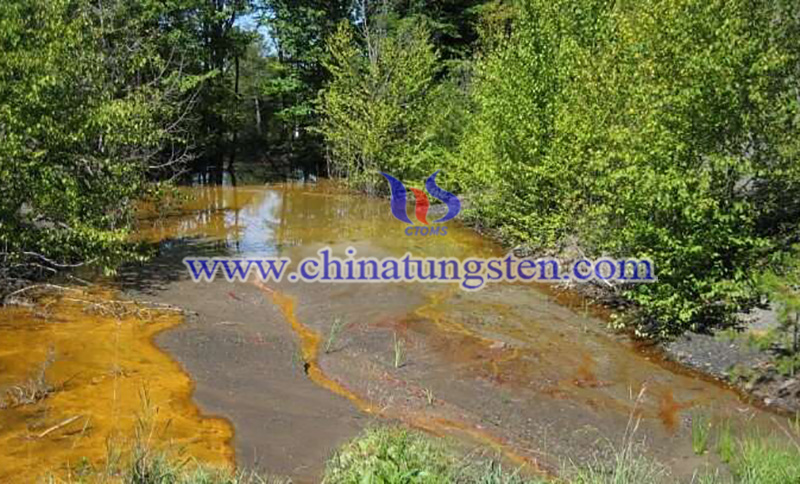Acid Mine Drainage Treatment Turns Waste into Rare Earth Elements
- Details
- Category: Tungsten's News
- Published on Monday, 10 August 2020 22:20
Scientists at Penn State University say a new way to treat acid mine drainage (AMD) can help turn environmental pollution issues into an important domestic source of important rare earth elements needed to produce technologies ranging from smartphones to fighter jets.
Mohammad Rezaee, assistant professor of mining engineering in the College of Earth and Mineral Sciences at Penn State, said: "Acid mine drainage has been a significant environmental concern for many decades. This research shows we can modify existing treatment processes in a way that not only addresses environmental concerns but at the same time recovers valuable elements and decreases the cost of treatment."
A team of scientists at Penn State has developed a two-stage process that allows them to recover higher concentrations of rare metal elements using a smaller amount of chemicals than before.

Sarma Pisupati, professor of energy and mineral engineering and director of the Center for Critical Minerals at Penn State, said: "This technique represents an efficient, low-cost and environmentally friendly method to extract these valuable minerals that are used in a wide variety of consumer and industrial products."
Rare earth elements are a group of 17 minerals, which are widely used in advanced technology, and are designated by the United States as elements that are vital to the national economy and national security. The United States currently imports nearly 100% of these materials, with China producing about 85% of the world supply.
Scientists say AMD from coal mining operations in Appalachia represents a promising domestic source of rare metals because it often contains high concentrations of the minerals and because it is already being collected and treated due to environmental concerns.
Pisupati said: "We are currently incurring costs just to treat the water, and in many cases, we are not even collecting all these minerals. Now we are able to turn what had been considered a waste product into a valuable resource."
AMD occurs when pyrite (iron sulfide) excavated from mining activities interacts with water and air and then oxidizes to produce sulfuric acid. Scientists said that the acid then breaks down surrounding rocks, causing toxic metals to dissolve into the water.
The traditional treatment method involves collecting AMD in a retention tank and adding chemicals to neutralize the pH (an indicator of whether a substance is acidic or alkaline). This causes the dissolved metals to precipitate, or form into solids, and settle out of the water. Up to 70% of rare earth elements can be extracted as a sludge using this process, and the rest are released along with the treated water, according to researchers.
Scientists have discovered that by adding carbon dioxide to AMD in two steps and then reaching a neutral pH of 7 (the goal of environmental remediation) to extract higher concentrations of rare earth elements and other key minerals.
Scientists reported in the Journal of Chemical Engineering that using this method, 90% of the aluminum can be recovered at a pH of 5, and 85% of rare metals can be recovered at a pH of 7.
Adding carbon dioxide to AMD produces chemical reactions that result in the formation of solid minerals called carbonites, the scientists said. The rare minerals bond with the extra carbonites and precipitate out of the water at lower pH values.
This process is called carbon dioxide mineralization and is an emerging technology that can be used to remove excess carbon dioxide from the atmosphere. Scientists say this research represents the first time it has been used to recover high concentrations of rare earth elements from acid mine drainage.
- Rare Earth Manufacturer & Supplier, Chinatungsten Online: www.chinatungsten.com
- Tungsten News & Prices of China Tungsten Industry Association: www.ctia.com.cn
- Molybdenum News & Price: news.molybdenum.com.cn
- Tel.: 86 592 5129696; Fax: 86 592 5129797; Email: sales@chinatungsten.com



 sales@chinatungsten.com
sales@chinatungsten.com